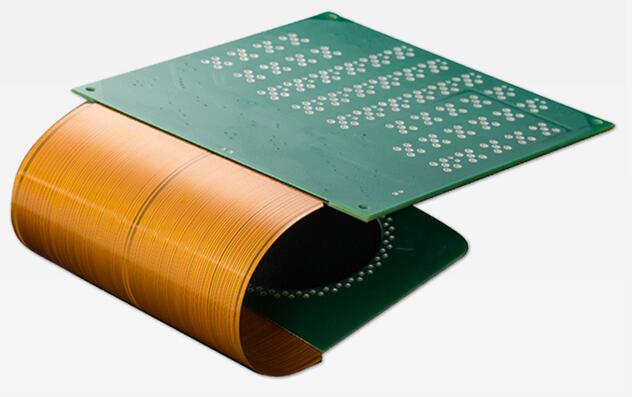How to design the soft and hard board?
Rigid-flex board is a kind of PCB circuit board that combines soft board and hard board. In terms of design, it is very different from soft board design and hard board design. Today, the editor of PCB factory will introduce to you how to design soft-hard board. Related knowledge.
1. A tear shape is used between the thick and thin lines to prevent sudden expansion or contraction of the line;
2. Use rounded corners to avoid sharp corners.
Two: In the case of meeting the electrical requirements, the pad should take the maximum value. The transition line at the junction of the pad and the conductor should avoid right angles, and should be round and smooth, and the toe should be added to the independent pad to strengthen the supporting effect.

3. Dimensional stability: add copper to the design as much as possible, and design as many solid copper ponds as possible in the waste area.
Fourth, the design of the cover film window
1. Add manual alignment holes to improve alignment accuracy.
2. The window design considers the scope of flow glue, usually the window opening is larger than the original design, and the specific size is provided by the design standard by ME.
3. Small and dense window openings can be designed with special molds: rotary punch, jump punch, etc.
5. Design of Rigid-flex Transition Zone
1. For the smooth transition of the line, the direction of the line should be perpendicular to the bending direction;
2. The wires should be evenly distributed in the entire bending area;
3. The wire width should be maximized in the entire bending zone, and the transition zone should not adopt PTH design, Coverlay and No flow PP design as much as possible.
6. Design of flexible zone with air-gap requirements
1. There must be no through holes in the part to be bent.
2. Additional protection of copper wire is added to the two sides of the line. In case of insufficient space, additional protection of copper wire can be added to the inner corner of the bent part.
3. The connecting part of the line needs to be designed as an arc.
4. Without affecting the assembly, the larger the bending area, the better.
Seven, other
Do not share the tool holes of the soft board, such as punch holes, ET, SMT positioning holes, etc.
The above is an introduction to the relevant knowledge on how to design the soft and hard board, I hope it will be helpful to you.
iPCB is a high-tech manufacturing enterprise focusing on the development and production of high-precision PCBs. iPCB is happy to be your business partner. Our business goal is to become the most professional prototyping PCB manufacturer in the world. Mainly focus on microwave high frequency PCB, high frequency mixed pressure, ultra-high multi-layer IC testing, from 1+ to 6+ HDI, Anylayer HDI, IC Substrate, IC test board, rigid flexible PCB, ordinary multi-layer FR4 PCB, etc. Products are widely used in industry 4.0, communications, industrial control, digital, power, computers, automobiles, medical, aerospace, instrumentation, Internet of Things and other fields.